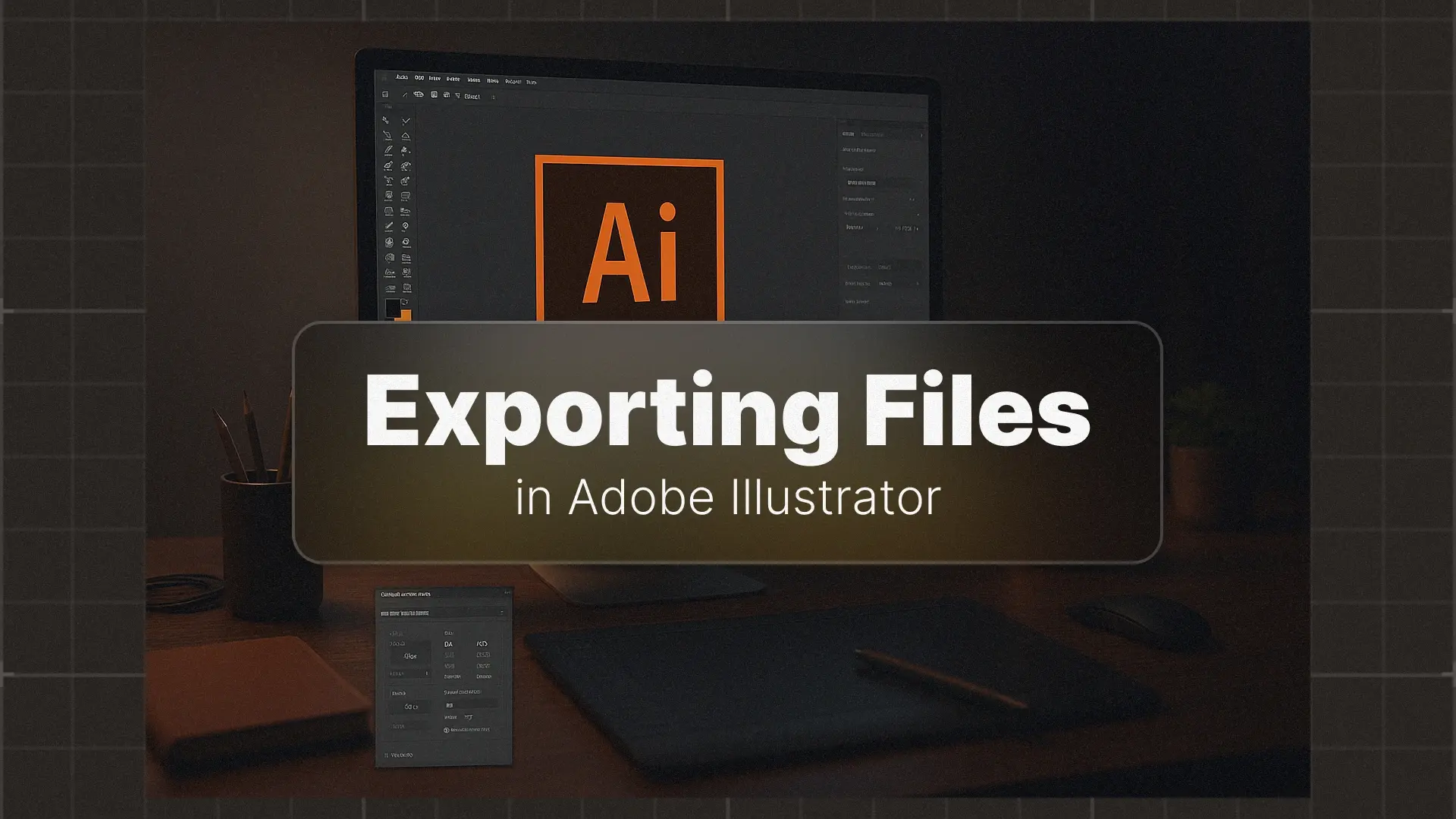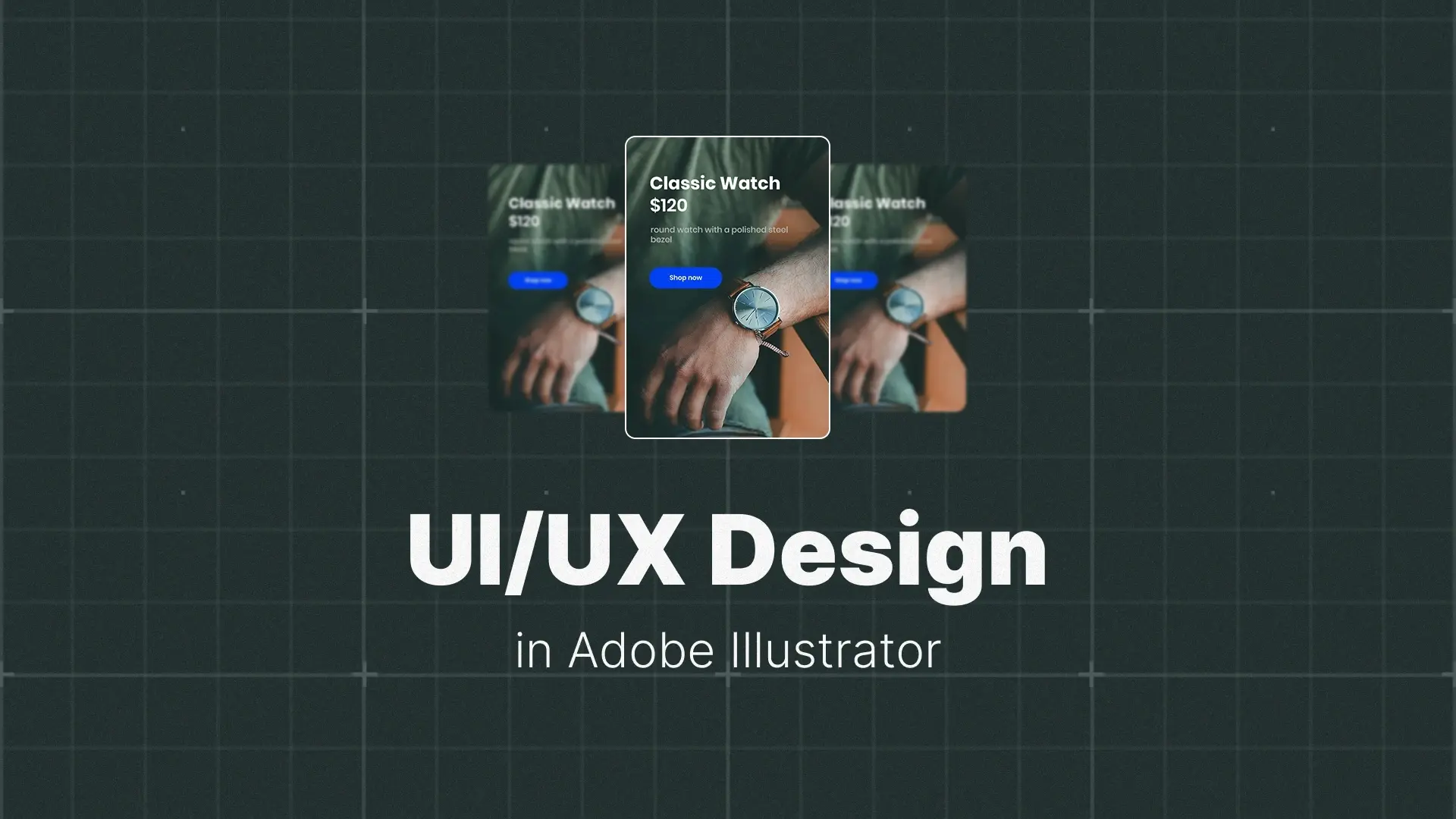How to Use Adobe Illustrator Templates to Work Faster

Overview
In the fast-paced world of graphic design, working smarter is just as important as working harder. Illustrator templates let you skip the blank canvas and dive straight into customization. But to truly take advantage of their power, you need to understand how to find the right templates, how to use and edit them efficiently, and even how to create your own reusable layouts.
By the end of this post, you’ll know exactly how to use templates in Illustrator to boost your workflow, maintain consistency, and keep your creative projects moving faster than ever.
👉 Looking for high-quality templates? Check out these Illustrator Templates to jumpstart your next project.
Professional Illustraitor Templates
What Are Illustrator Templates (.ait files)?
The Difference Between a Standard File (.ai) and a Template (.ait)
At first glance, an .ai file and an .ait file might seem interchangeable. But here’s the key difference:
When you open a .ait (Adobe Illustrator Template) file, Illustrator creates a new, untitled document based on that template. The original file stays intact, preventing you from accidentally overwriting your base layout. This is especially useful for brand assets, client deliverables, or frequently used designs like invoices or social media posts.
In contrast, opening a .ai (Adobe Illustrator) file opens the original document directly. Any changes you make will alter the file unless you manually duplicate it.
Using .ait files is the best way to build reliable, repeatable design systems inside Illustrator.
The Top 3 Benefits of Using Templates
1. Speed
Templates drastically reduce setup time. Instead of manually recreating elements like grids, margins, color schemes, or text styles, you can jump straight into customization. Whether you’re working on a flyer, resume, or social post, you save time with every new project.
2. Consistency
For brands or agencies, consistency is everything. Illustrator templates allow you to maintain visual uniformity across multiple documents—whether it’s spacing, typography, or logo placement. You can even create your own custom template library for team-wide use.
3. Inspiration
Templates are also a great way to jumpstart the creative process. If you’re staring at a blank canvas, opening a professionally designed layout can give you instant structure and ideas to build upon.
How to Use and Edit a Template in Illustrator
Opening and Understanding the Template File
To open a .ait file:
- Launch Adobe Illustrator.
- Go to File > Open and select your .ait file.
- Illustrator will create a new untitled document based on the template.
Inside most professional templates, you’ll see:
- Layered structures (e.g., “Header”, “Body”, “Background”)
- Grouped elements to keep designs organized
- Placeholder text and images ready for replacement
Take a moment to explore the Layers panel and understand how the design is structured. This makes editing faster and more intuitive.
How to Edit Text and Colors
To change the text:
- Use the Type Tool (T) to select and edit any placeholder text.
- Make sure the text box isn’t part of a locked layer (check the Layers panel).
To update the colors:
- Open the Swatches panel (Window > Swatches).
- Select an element, then choose a new color from the swatches or create your own.
- Many templates use global colors, so updating a swatch will automatically update all elements using it—super efficient!
Customizing the Layout
Want to insert your own image or illustration? Just:
- Select the placeholder image.
- Use File > Place to insert your own file.
- Resize or crop using the bounding box while holding Shift to maintain proportions.
You can move elements, delete sections, or duplicate design blocks to better suit your needs—just be careful not to disrupt the template’s core structure unless you’re confident with layout design.
Popular Templates and How to Use Them
The Adobe Illustrator Resume Template
Resume templates are among the most downloaded formats. They come preloaded with professional layouts, icons, and typographic styles that make your resume stand out.
Customization tips:
- Replace placeholder info with your real data.
- Use paragraph and character styles to keep typography consistent.
- Don’t overload your design—white space is your friend.
Looking to get started quickly? Try one of these Illustrator templates.
The Business Card Template
Business card templates often include important design features like:
- Bleed areas (e.g., “Adobe Illustrator business card template with bleed”)
- Grid systems for alignment
- Logo placeholders
Make sure your final design includes the bleed area (typically 0.125″) so that nothing important gets cut during printing.
Pro tip: Always export business cards as PDF with bleed and crop marks for the best results.
The T-Shirt Template
Ever wanted to visualize your design on a t-shirt? With an Illustrator t-shirt mockup, you can!
Here’s how:
- Place your design artwork on the mockup layer.
- Use Clipping Masks to fit the design to the shirt shape.
- Lock or dim surrounding layers to focus on your artwork.
This is perfect for designers creating clothing lines, merch drops, or visual proposals for clients.
How to Create and Save Your Own Illustrator Template
Designing Your Reusable Layout
Start by creating a document that includes the elements you frequently use:
- Grid layout
- Placeholder text and image frames
- Logo position
- Font styles and color swatches
For example, if you’re making a social media post template in Illustrator, you might include:
- A title text block
- A consistent background gradient
- Space for images or product previews
- Footer with branding
Label and organize your layers clearly—this makes the template much easier to work with later, especially if you plan to share it with a team.
How to Save a File as a Template in Illustrator
Once your layout is ready, it’s time to save it as a true .ait template file:
- Go to File > Save As Template…
- Choose a name for your template and save it in Illustrator’s default Templates folder or a custom location.
- Illustrator will save the file as .ait instead of .ai.
Now, every time you open this file, it’ll create a fresh copy, leaving the original untouched.
Bonus: You can even organize a full folder of branded templates—great for marketing teams or freelance designers who want a polished workflow.
Creating a Template Layer
Illustrator also offers a powerful feature called a template layer, ideal for tracing or guiding design elements without editing the base artwork.
Here’s how to create one:
- Open the Layers panel.
- Double-click a layer name.
- Check the “Template” option.
This automatically locks the layer and dims it to 50% opacity, helping you trace or design on top of reference elements without interference.
This is perfect for:
- Sketch tracing
- Layout wireframes
- T-shirt and product mockup alignment
Conclusion
👉 Ready to explore? Browse Pixflow’s premium Illustrator templates to kickstart your next project.
For more in-depth Illustrator tips and pro workflows, check out our blog: Mastering Adobe Illustrator: A Comprehensive Guide.









